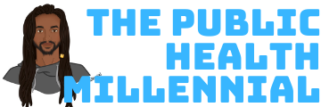Many people are asking how to write a cover letter as they are looking to apply to jobs.
The job market is going to be a very unusual and tough one for at least the foreseeable future. That being said, employers are still hiring and therefore you should still be applying.
You will want to ensure that you give yourself an upper hand in these times. Set yourself apart and more likely to be called in for an interview. Do this by ensuring your cover letter is one that sparks intrigue and highlights your qualities.
Make sure you proofread your cover letter several times before submitting – no one likes silly mistakes.
Support The Public Health Millennial on BuyMeACoffee
(Related: Overcoming Imposter Syndrome)
What is a Cover Letter?
Everyone knows what a resume is, but cover letters are a little bit less understood.
A cover letter is a document used to introduce yourself in the job application process. It sets up your resume to highlight what makes you a good fit for the job.
Cover letters are required for most job applications. And even if they aren’t asked for, you should aim to always submit one with your job application.
Your resume lays out the facts of your professional life, while the cover letter should be used to convey more of your personality.
Think of your cover letter as your first introduction to the hiring manager. The goal of your cover letter should be to make you memorable in the best ways possible.
Many experts say that a cover letter should be readable in 10 seconds or less.
(Related: 10 Actions To Improve Your Career Right Now)
How To Write A Cover Letter?
Length
You’ll tend to hear different people say different things about how long your cover letter should be. Some say very brief and others say two pages.
Optimally, your cover letter should be one page long.
It should consist of three to four paragraphs, but more likely three.
Cover letters should range in length from 200 – 325 words.
Cover letters contain these sections:
- Contact Information
- Formal Hello
- First Paragraph
- Second Paragraph
- Third Paragraph
- Closing
Contact Information
Apart from the content, your cover letter should have your contact information like in your resume and the date. This can either be in a letter-like way or the same way in your resume.
You can also include the name, position, and company name of the hiring manager.
For example:
“Jane Done, Hiring Manager
Jane Done Corporation”
Formal Hello
The first thing you should do before submitting your cover letter is researching the company to see if you can find out the name of the person in charge of hiring. This can usually be done by either looking on the job positing or visiting the company’s staff page on their website.
A satisfactory hello would be: Dear Mrs. Janet Dow,
Remember that if the person does have a doctorate degree, refer to them as such unless otherwise told.
First Paragraph
Introduce yourself and tell the employer why you are applying to the job. Include how you are excited and why the job lines up with your career goals. Ensure that you put the posiiton title that you are applying for.
You want to try to grab the hiring manager’s attention in your first sentence if possible. You’ll want to add key words that match the job posting for every job you are applying for.
Second Paragraph
This is going to be the paragraph that has the most substantive content.
You’ll want to speak about your most relevant experience and try to talk about specifics qualifications and skills that make you a perfect fit for the job.
You’ll want to show that you are a problem solver. So you could set it up:
- I did this
- Which created this effect
- Tie in how this makes you a great fit for the position
- Make connection
Try to make connections between the accomplishments you highlight. And when possible, be quantitative and include actual numbers. Also try to avoid regurgitating your resume bullet points, but rather illustrate more deeply the highlights on your resume.
If you are a student and/or may not have relevant experience then try to talk about a similar experience in a class project you did or try to relate some other work you did to it.
Additionally, you may want to talk about the organization and what about it aligns with your personal mission and values. This should not be the first thing that you speak to and should only be used it the organization does align with your personal mission and values.
Third Paragraph
This is going to be your last paragraph.
You’ll want to begin by thanking the hiring manager. Something along the lines of:
- Thank you for your time and consideration
- Thank you and I look forward to talking more about this role
- I welcome the opportunity to speak with you if you feel I’d be a strong candidate for this role
You can also use this paragraph to explain any gaps in your employment history.
(Related: 6 Months At My Public Health Fellowship|5 Lessons)
Closing
Your close should be friendly but formal.
Some examples of closings for your cover letter are:
- Sincerely,
- Best regards,
- Respectfully,
And finish by signing your first and last name.
Bonus Tips
Tips on things recruiter/hiring managers HATE:
- Start it with “To Whom It May Concern.”
Very impersonal and shows that you didn’t do your homework of the organization. - Regurgitate word for word your resume.
Hiring managers don’t want to have to read the same thing twice – its a waste of their time. Or maybe you put something that turns them off before they even get to your resume.
Tips to HELP:
- Try to include as many key words from the job posting in the cover letter as possible without it becoming obnoxious.
- In your third paragraph say that you are open to talking more about the position you are applying to AND any other positions in their organization.
Summary
Cover letters are an essential part of all jobs applications.
Making sure your cover letter captures your personality while highlighting your qualifications and relevant skills to be successful in the job position.
Your cover letter should contain:
- Contact Information
- Formal Hello
- First Paragraph
- Second Paragraph
- Third Paragraph
- Closing
Try to keep you cover letter to one page and try to use 250-325 words in the body of your cover letter.
What has been a challenge for you making your cover letter?



